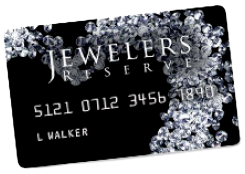Photo by DiamondGalaxy at Shutterstock
Choosing the right diamond cut is one of the most important things you need to consider when you’re choosing between engagement rings. Which cut you go for makes a significant difference to the ring’s appearance and style. However, the cut quality also influences the sparkle and brilliance of the diamond.
So, which diamond cut is best for engagement rings? If you’re unsure which you prefer, an expert jeweler in Highlands Ranch, CO, can show you a variety to help you decide. This article will explain the difference between diamond cuts and which you should consider for your proposal depending on your taste.
What is a Diamond Cut?
When we refer to a diamond’s cut, we are talking about two characteristics. The first is how skillfully the craftsperson formed the raw diamond into its finished shape. A high-quality cut provides a superior shine and brilliance. It also influences the engagement rings and their diamond’s shape.
It’s a good idea to purchase the highest-quality diamond cut you can afford on your budget. Cut quality is rated from poor to excellent, and it’s best to buy a diamond rated as at least ‘good.’
Diamond shape is a matter of taste, and each has its own advantages and disadvantages. Each diamond shape provides a different look, and some suit particular hand shapes more than others.
Diamond Cut vs. Shape
It’s important to be aware that a diamond’s cut and shape are different things. The cut of a diamond refers to its facets and how they reflect the light, while the shape relates to its overall geometry. However, a diamond’s cut dictates its finished shape, which is why many people use the word ‘cut’ to encompass the overall shape. The following are the most common diamond cuts and shapes:
1. Round Cut
Round diamonds are the most popular choice for engagement rings because they offer classic elegance and suit most hand shapes and personal styles. A round diamond has numerous facts, making it exceptionally sparkly and reflective.
The process of carving a round diamond results in a relatively high amount of the stone being lost. Therefore, round-cut diamonds are more expensive than other cuts.
2. Cushion Cut
The cushion-cut diamond was the precursor to the more modern round cut and is sometimes known as a pillow cut. It has a square or rectangular shape with gently-rounded edges, giving a beautiful sparkle and superior fire.
The cushion cut is versatile and looks beautiful in most settings, and it’s a flattering shape for larger fingers. It has a romantic, traditional appearance that makes it a good choice for people that like vintage styles.
3. Princess Cut
A princess-cut diamond has a distinctive, strongly geometric square shape with numerous facets. It provides a similar sparkle to a round-cut diamond and looks flattering on any hand shape. Its striking shape makes it an ideal option for brides-to-be who like modern engagement rings.
One of the main advantages of a princess-cut diamond is that it conceals flaws very well, making it a good option if you can’t afford the very highest diamond clarity. It also looks elegant in any size.
4. Emerald Cut
The emerald cut is a classic, vintage style with large facets. Therefore, it has a shiny appearance that reflects the light in flashes compared to the sparkly appearance of the previous cuts.
Emerald-cut diamonds have a rectangular shape that looks stunning in vintage settings and is reminiscent of Art Deco jewelry. This shape is also exceptionally suitable for making shorter, wider fingers appear slimmer.
5. Marquise Cut
The marquise shape is a classic cut with an elongated, boat-like shape and tapered ends. It has a romantic history, as King Louis XV of France commissioned marquise-cut diamonds in the 18th century to mimic the shape of the Marquise de Pompadour’s lips, his official mistress.
Marquise-cut diamonds elongate and slim the fingers when set vertically, although some more contemporary styles set the stone horizontally. It has many facets, allowing it to sparkle in the light and making it look larger than its actual size. It’s a good choice for people who like vintage engagement rings or want to make the most of a smaller diamond for budgeting purposes.
6. Oval Cut
An oval-cut diamond is similar to a round diamond but with a longer shape, offering a similar amount of sparkle and fire. It is universally flattering and works well in a wide variety of settings.
Like the marquise cut, an oval cut diamond has the advantage of creating an illusion of being larger than it is. It’s more unusual than a round or princess-cut but with the same classic elegance.
7. Pear Cut
A pear-shaped diamond, also referred to as a teardrop, has a round base and a pointed tip. It possesses a beautiful inner fire and suits any hand, although it’s a popular choice for making short, wide fingers appear longer.
The pear-shaped cut harks back to the 1400s and is an excellent option for those who like vintage, glamorous engagement rings.
8. Heart-Shaped Cut
A heart-shaped diamond is based on the popular round cut and has many facets, giving it a beautiful sparkle. However, it’s far less common than the previous shapes, making it worth considering for a bride-to-be who loves unique engagement rings.
Heart-shaped diamonds create a romantic and meaningful engagement ring. They also tend to be more affordable than round-cut diamonds of a similar dimension.
The Bottom Line
While a diamond’s cut describes its facets, it determines the overall shape of the carved diamond. If you’re unsure which diamond shape is right for your intended engagement rings, the team at Matheu’s Fine Watches & Jewelry in Highlands Ranch, CO, is ready to help. Our expert jewelers can show you a wide variety of diamond cuts and shapes and help you choose the ideal setting to showcase it perfectly.





